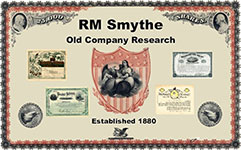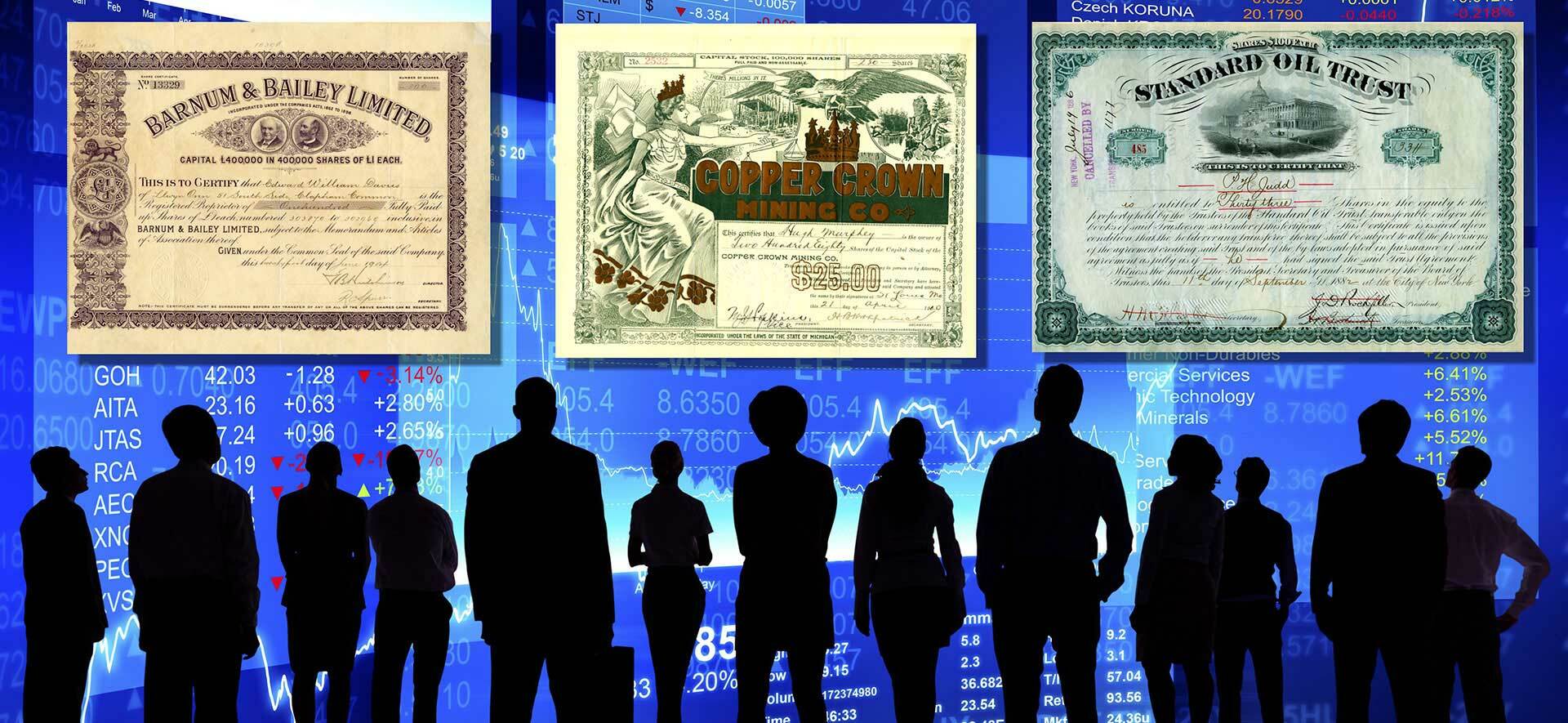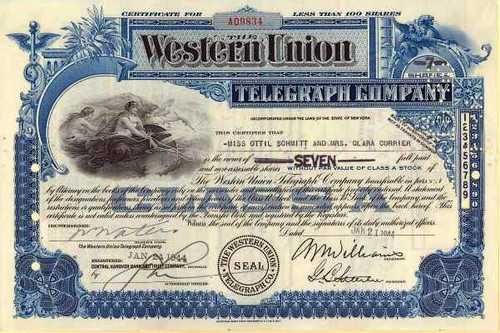Beautifully engraved Certificate from the famous Western Union Mining Company issued in 1938 or earlier. This historic document has an ornate border around it with 3 mining scene vignettes. This item is hand signed and is over 68 years old. 
The Aurora Sampson Mining Company and the H.E.M. Mining Company, holders of adjoining properties including a large group of claims and a millsite on Revenue Gulch in Evolution Mining District, Shoshone County, Idaho, about two miles west of Wallace, merged early in 1916 to form the Western Union Mining Company, as incorporated under the laws of the state of Idaho. The first set of directors for the new company included D.H. Anderson, J.E. Burbank, William Bjorklund, George Allen, William Holm, Erick Hagman and Russell F. Collins, essentially the group which would run the company for its first eight years. A considerable amount of galena lead ore was extracted, with the years 1921-1923 showing the highest profit. In addition to working the mine and a millsite, Western Union leased property on what was known as The Western Union Townsite, later Silverton, Idaho. The Western Union Mining Company continued to develop and operate its property until the lead market became unfavorable. Thereafter portions of the land were worked and mined by lessors. About 1923 the Hercules Mining Co. began purchasing all available stock in the Western Union company. The discovery that the Western Union secretary Ben L. Collins had sold all his stock and advised his friends to do the same led to a public quarrel among the Western Union directors. By 1924 Hercules had obtained enough Western Union stock to be able to take control of the company and install a new board of directors including Harry L. Day, Jerome J. Day, August Paulsen, L.W. Hulton, and Frank M. Rothrock. M.H. Sullivan and Herman J. Rossi were carried over from the old board, apparently because of their connections at the Bunker Hill Smelter and their contract with Western Union. For the next twenty-three years the Western Union Mining Company operated mainly by leasing out its property, including claims and tunnels for mining, timberland for logging, property for the operation of a fish hatchery, and the Western Union Townsite for residential development. In 1930 the Western Union bought out one of their lessors, The Wilbur Mining Company, and took over that firm's remaining property. In 1934 Western Union decided to abandon twenty-seven unpatented mines in order to avoid the expense of annual assessment work. Western Union Mining Company stock was dropped from the Standard Stock Exchange of Spokane in 1939. The Western Union Mining Company continued to exist until 1947 when it merged with other companies to become Day Mines, Inc.











